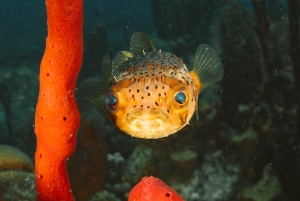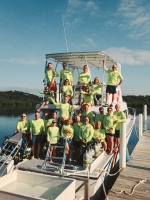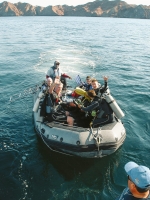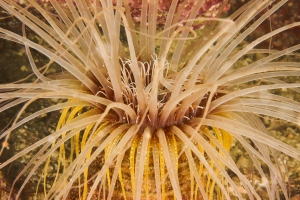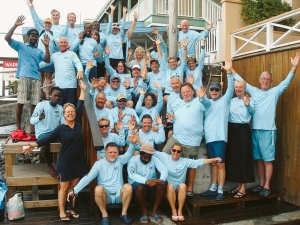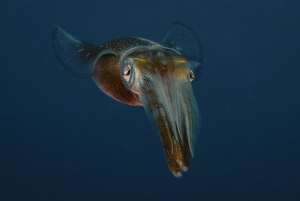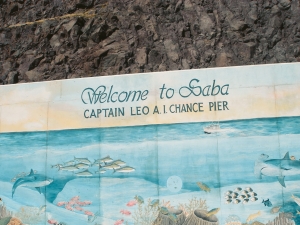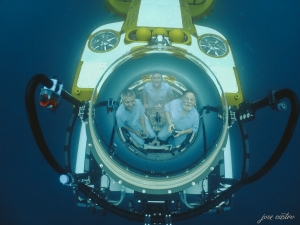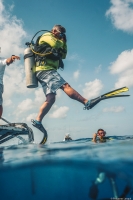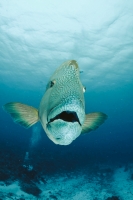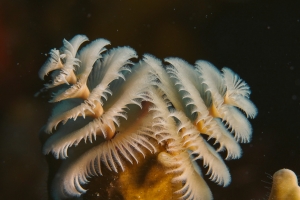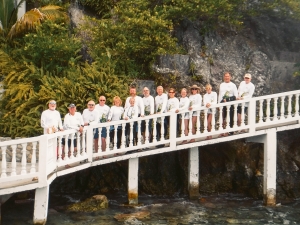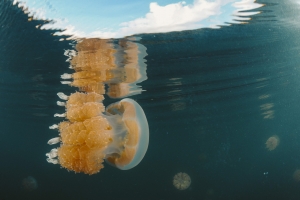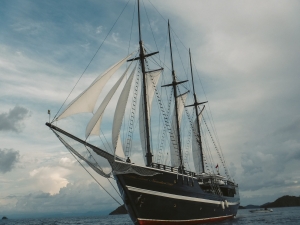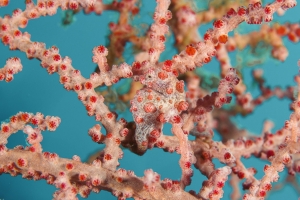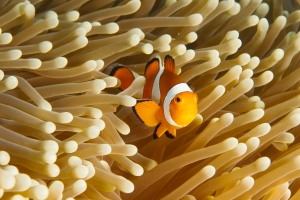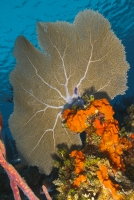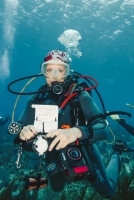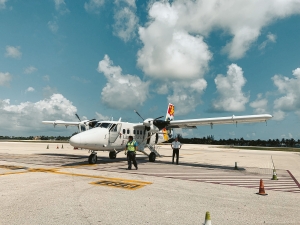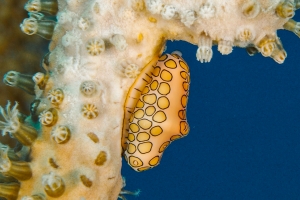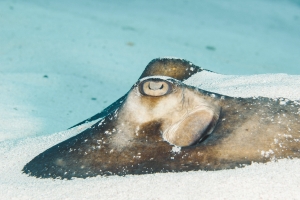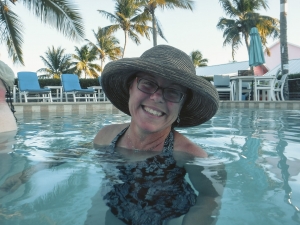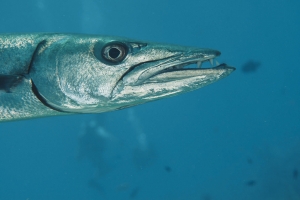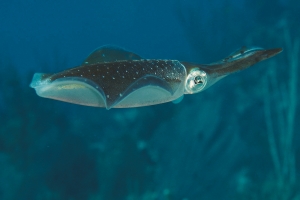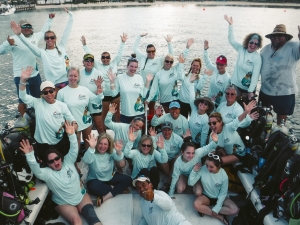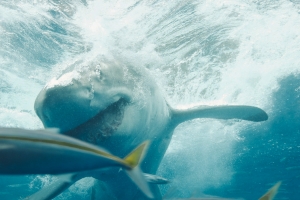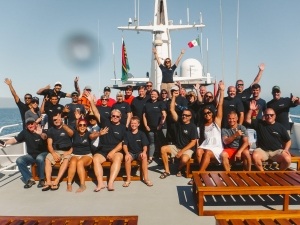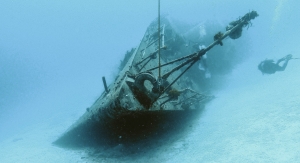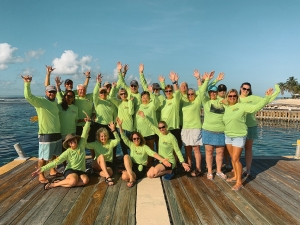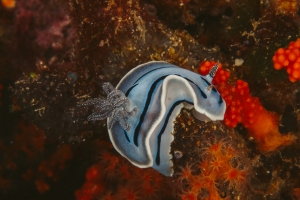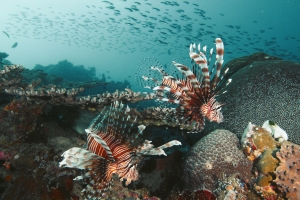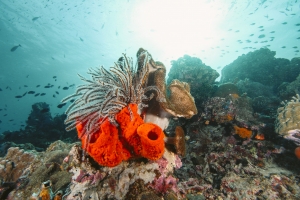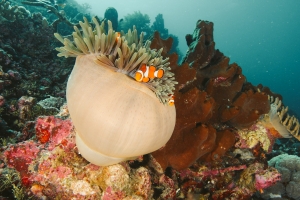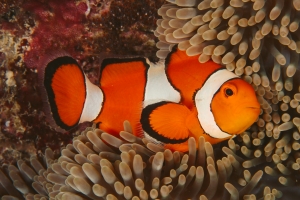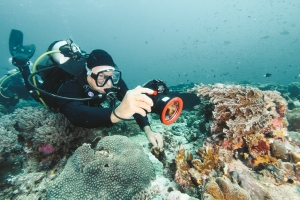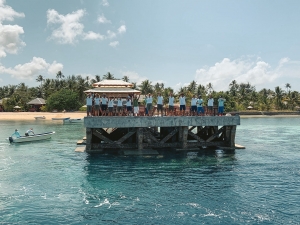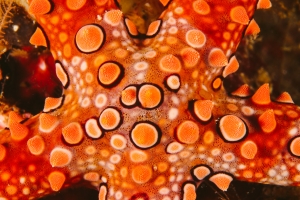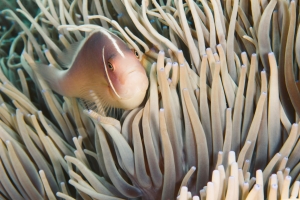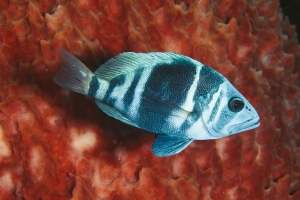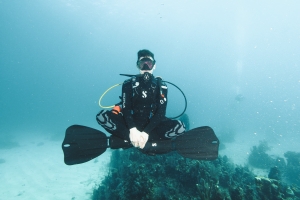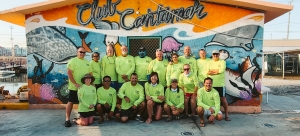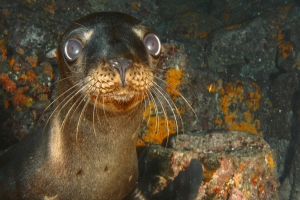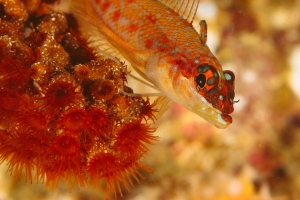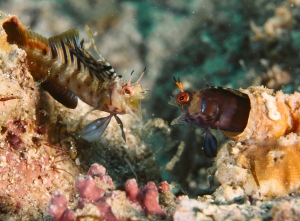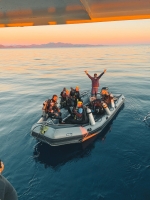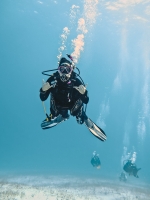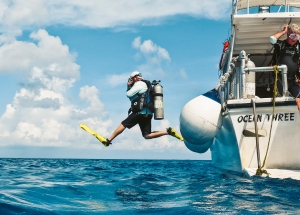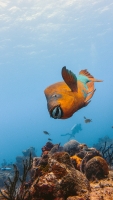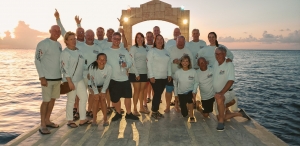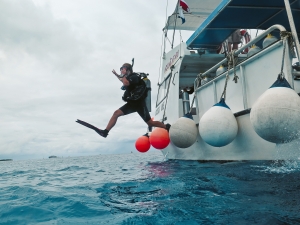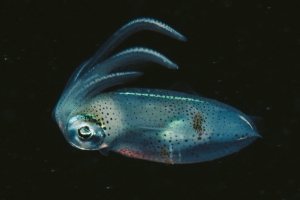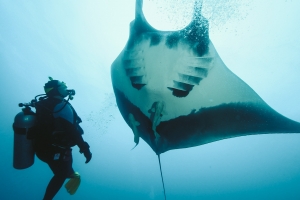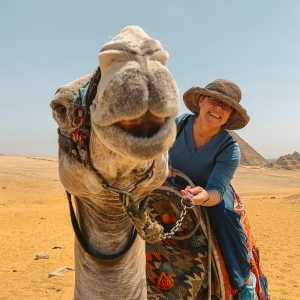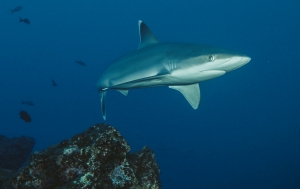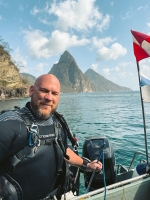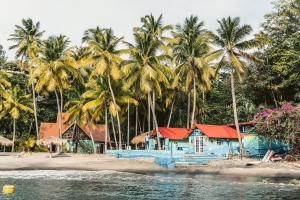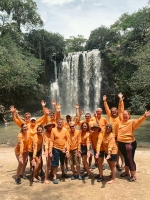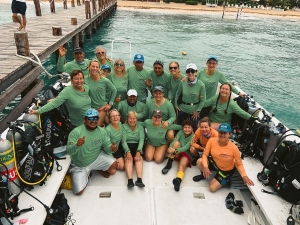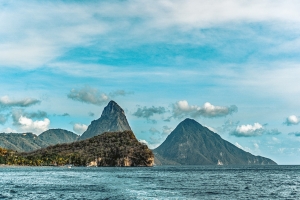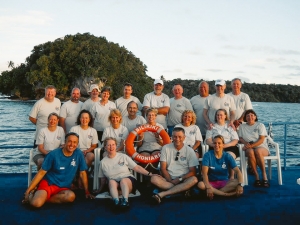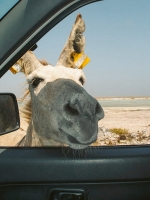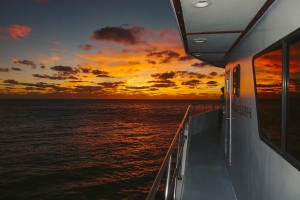Learning to scuba dive with Y-KIKI DIVERS and PADI is an incredible adventure! With PADI as your training organization, your path to breathing underwater is accomplished in three phases:
During the first phase of your PADI Open Water Diver scuba certification, you develop an understanding of the basic principles of scuba diving. You learn things like how pressure affects your body, how to choose the best scuba gear and what to consider when planning dives. This is all done at your own pace at home or on the go through the PADi app or a web browser.
When you complete the eLearning you'll take a quiz that makes sure you have all the key concepts and ideas down. Then you will join other students for a short classroom session with your instructor prior to hitting the pool where you have a chance to ask questions and further your knoweledge.
This is what it's all about – diving. You develop basic scuba skills by scuba diving in a pool or body of water with pool-like conditions. Here you'll learn everything from setting up your scuba gear to how to easily get water out of your scuba mask without surfacing. You'll also practice some emergency skills, like sharing air or replacing your scuba mask. Plus, you may play some games, make new friends and have a great time. There are five confined water dives, with each building upon the previous. Over the course of these five dives, you attain the skills you need to dive in open water.
After your confined water dives, you continue learning during four open water dives with a Y-KIKI DIVERS PADI Instructor at a dive site. This is where you fully experience the underwater adventure – at the beginner level, of course. You may make these dives at Mermet Springs (quarry in southern Illinois) or at a more exotic destination while on a Y-KIKI DIVERS sponsored trip. Alternatively, Y-KIKI DIVERS can provide referral paperwork for you to present another PADI shop at a destination of your choice to complete your checkout dives.
Our regularly scheduled course takes two weekends to complete in addition to your eLearning. Those weekends can be back to back, or you can spread them out to suit your schedule. It's possible to complete your confined and open water dives in as few as three days after completing the knowledge development portion online via eLearning if you opt for our Executive Open Water Course or schedule a private course..
The PADI Open Water Diver course is incredibly flexible and performance based, which means that Y-KIKI DIVERS can offer a wide variety of schedules, paced according to how fast you progress.
Your instructor's interest is in your learning to scuba dive, not in how long you sit in a class. So, training is based upon demonstrating that you know what you need to know and can do what you need to do. This means that you progress at your own pace – faster or slower depending upon the time you need to become a confident scuba diver who dives regularly. You can start learning to scuba dive online right now with Y-KIKI DIVERS and PADI eLearning.
Choosing and using your scuba gear is part of the fun of diving. Y-KIKI DIVERS will help you find the right gear. Each piece of scuba equipment performs a different function so that collectively, it adapts you to the underwater world.
When you start learning to scuba dive, as a minimum, you must have your own:
These have a personal fit, and Y-KIKI DIVERS will help you choose ones that have the fit and features best suited to you. Included in the cost of your PADI Open Water Diver course, Y-KIKI DIVERS will provide a:
Check with Y-KIKI DIVERS to confirm sizing available for your course package. It's recommended that you invest in your own scuba equipment when you start your course because:
If you have an appetite for excitement and adventure, odds are you can become an avid PADI scuba diver. You'll also want to keep in mind these requirements:
Minimum Age:
Physical: For safety, all students complete a brief scuba medical questionnaire that asks about medical conditions that could be a problem while diving. Some conditions require a physician assess the condition as it relates to diving and sign a medical form that confirms that you're fit to dive. Allow ample time prior to any course to make sure you can get the required approval if it is required.
Waterskills: Before completing the PADI Open Water Diver course, your instructor will have you demonstrate basic waterskill comfort by having you:
About Physical Challenges: Any individual who can meet the performance requirements of the course qualifies for certification. There are many adaptive techniques that allow individuals with physical challenges to meet these requirements. Individuals with paraplegia, amputations and other challenges commonly earn the PADI Open Water Diver certification. Even individuals with more significant physical challenges participate in diving.
Learning Materials : PADI eLearning is provided with the Open Water Diver course.
1.) We will assing an eLearning code and PADI will email a link to redeem your code. Proceed at your own pace through the Introduction, the Five Sections and the Final Exam. You may call or e-mail us with any questions as you work through the material.
2.) You will receive a digital logbook with your course. The log book is your proof of dive experience and also serves as a reference source for your past diving experience. You might opt to purchase a hard copy logbook for future dives.
3.) Y-kiki Divers does not provide or rent personal equipment: mask, fins, snorkel and boots. If you will be making your personal equipment purchase from us, please allow about 30-45 minutes for our salesperson to properly fit you and explain the performance and use differences in the individual pieces of equipment and how they can affect your overall diving enjoyment and safety. You will need your personal equipment by your first pool training date. All other required equipment is provided by Y-kiki Divers.
4.) On Saturday, you will meet at our store from 7:30am-11:00am. We will accomplish: the fitting for your rental equipment, take a review exam to show understanding of the material, take your photo for your certification card, show you how to build up and break down your scuba unit. We will meet at the pool from Noon-5pm on both Saturday & Sunday.
5.) Once you have completed the e-Learning and confined water training, you are ready to proceed to the Open Water dives. If you are completing your certification dives with Y-kiki Divers, you will be responsible for your transportation to the dive location, entry fees, meals and lodging. During class, you will be fitted with rental equipment and it will be prepared for you by the staff. You can pick up your rental equipment at Y-kiki Divers any time after 3 p.m. on the Thursday of your open water dive dates. Upon the conclusion of the weekend, we ask that you rinse and dry the rental gear before you return it to the shop (no later than Tuesday). As a courtesy, we ask that weights are single laced on the belt. Do not put the weights in the gear bag.
6.) The fine print: The PADI Open Water Diver course builds upon the concept of performance-based learning. This means student divers progress through the course by demonstrating that they meet measurable learning objectives. The course’s instructional design sequences these objectives from simple to complex, so students build upon previous learning as they progress. As a result, should the need arise for you to miss a training session, the class MUST be made up before you can continue. Call Y-kiki Divers at 314-469-8722 or 314-843-0354 to notify us of your schedule conflict and to make arrangements for a make-up class. Additional fees may be assessed. Additional instruction: Finally, if you or the instructor feels you require additional pool time to meet the performance requirements, Y-kiki Divers will work with you to schedule additional private one-on-one instruction. In closing, your instructor must feel confident that you have completed the entire course satisfactorily and that you can perform the necessary skills safely on your own or he/she can not certify you. Y-kiki Divers does not issue refunds for any portion of the PADI Open Water Diver Course. We will, however, make every effort to work with you so that you can confidently meet the requirements to pass the course.
You can dive practically anywhere there's water – from a swimming pool to the ocean and all points in between, including quarries, lakes, rivers and springs. Where you can scuba dive is determined by your:
Lakes, rivers, and quarries provide opportunities to dive locally. Y-kiki Divers uses Mermet Springs to conduct training dives, but it's also great for fun diving. Check out our Local Dive Sites page for a list of nearby dive sites. Bonne Terre Mine is close, but if you don't mind a little longer drive you can find diving to suit divers of all experience levels.
No, assuming you have no irregularities in your ears and sinuses. The discomfort is the normal effect of water pressure pressing in on your ears. Fortunately, our bodies are designed to adjust for pressure changes in our ears – you just need to learn how. If you have no difficulties adjusting to air pressure during flying, you'll probably experience no problem learning to adjust to water pressure while diving.
Not necessarily. Any condition that affects the ears, sinuses, respiratory function or heart function or may alter consciousness is a concern, but only a physician can assess a person's individual risk. Physicians can consult with the Divers Alert Network (DAN) as necessary when assessing a scuba candidate.
DAN has information available online if you wish to do some research.
Sun burn and seasickness, both of which are preventable with over the counter preventatives. The most common injuries caused by marine life are scrapes and stings, most of which can be avoided by wearing gloves and an exposure suit, staying off the bottom and watching where you put your hands and feet.
Contact Y-KIKI DIVERS for information about exposure protection needed for any of your diving.
During the manufacturing process of scuba masks, silicone oil residue coats the lenses. If you do not remove this coating, your lenses will continuously fog becasue the silicone is resistant to most anti-fogging solutions. In order to clean the lenses, take a mild abrasive (e.g., Gear Aid’s Sea Buff, a non-gel toothpaste, Soft Scrub or a baking soda paste) and gently scrub the interior of the mask lenses. Rinse clean and repeat several times.
After a thorough cleaning your mask is ready for use. Apply the anti-fog soltuion of your choice and enjoy your dives.
When you're lucky, you'll get to see a shark.
Although incidents with sharks occur, they are very, very rare. Most commonly shark encounters primarily involve spear fishing or feeding sharks, both of which trigger eractic feeding behavior. Sharks main food source is fish, and if they can get a free feed they will.
Most of the time, if you see a shark it's passing through and a relatively rare sight to enjoy.
Aside from pregnancy, no. Because physiologists know little about the effects of diving on the fetus, the recommendation is that women avoid diving while pregnant or trying to become pregnant.
With the necessary training and experience, the limit for recreational scuba diving is 130 feet. Beginning scuba divers stay shallower than about 60 feet and a Junior Scuba Diver then is limited to 40 feet. Although these are the limits, some of the most popular diving is no deeper than 40 feet where the water is warmer and the colors are brighter.
Technical and commercial divers often exeed the limits of recreational diving. The PADI TecRec courses provide the proper training if you are interested in exploring beyond recreational diving.
People find the “weightlessness” of scuba diving to be quite freeing. Modern scuba masks are available in translucent models, which you may prefer if a mask makes you feel closed in. During your scuba diving training with Y-KIKI DIVERS, your instructor gives you plenty of time and coaching to become comfortable with each stage of learning. Your scuba instructor works with you at your own pace to ensure you master each skill necessary to become a capable scuba diver who dives regularly.
Y-KIKI DIVERS keeps classes small so that we can give you more time to get comfortable with the amazing world of diving.
We will ship to anywhere in the United States. Orders totalling over $175 qualify for free shipping to anywhere in the continental U.S. If you need something shipped to Hawaii or Alaska give us a call and we can figure out the shipping charges.
